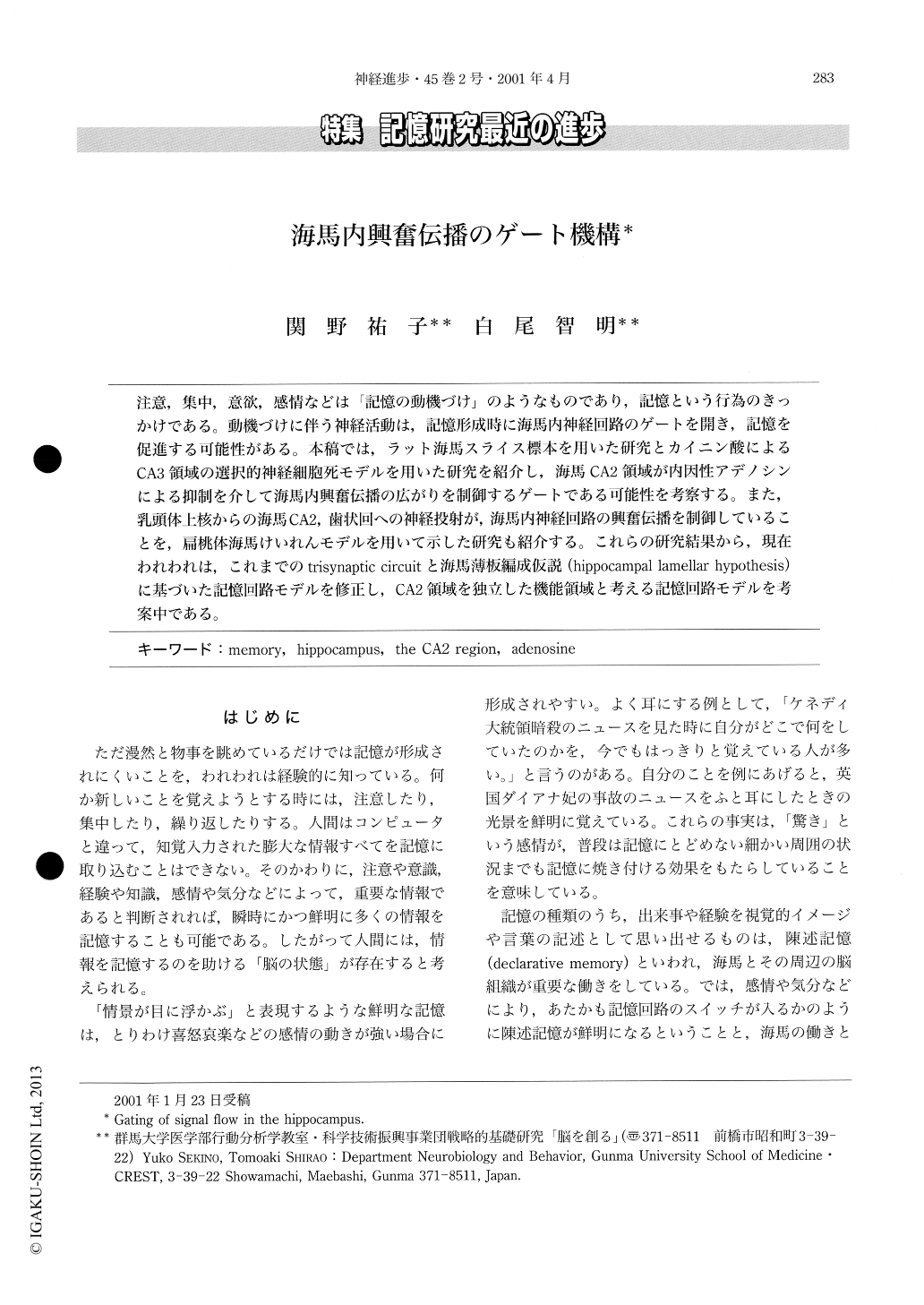Japanese
English
- 有料閲覧
- Abstract 文献概要
- 1ページ目 Look Inside
注意,集中,意欲,感情などは「記憶の動機づけ」のようなものであり,記憶という行為のきっかけである。動機づけに伴う神経活動は,記憶形成時に海馬内神経回路のゲートを開き,記憶を促進する可能性がある。本稿では,ラット海馬スライス標本を用いた研究とカイニン酸によるCA3領域の選択的神経細胞死モデルを用いた研究を紹介し,海馬CA2領域が内因性アデノシンによる抑制を介して海馬内興奮伝播の広がりを制御するゲートである可能性を考察する。また,乳頭体上核からの海馬CA2,歯状回への神経投射が,海馬内神経回路の興奮伝播を制御していることを,扁桃体海馬けいれんモデルを用いて示した研究も紹介する。これらの研究結果から,現在われわれは,これまでのtrisynaptic circuitと海馬薄板編成仮説(hippocampal lamellar hypothesis)に基づいた記憶回路モデルを修正し,CA2領域を独立した機能領域と考える記憶回路モデルを考案中である。
In this article, we first review the classical concepts for the hippocampal network, such as the trisynaptic circuit and the lamellar hypothesis, and summarize recent results which highlighting the underappreciated role of the CA2 region. Second, we propose the novel concept that memory information is stored efficiently only when the brain is in appropriate state for memory acquisition. This state, which we call the motivating state for memory, is determined by the levels of awareness, cognition, attention, emotion and other influences.

Copyright © 2001, Igaku-Shoin Ltd. All rights reserved.


